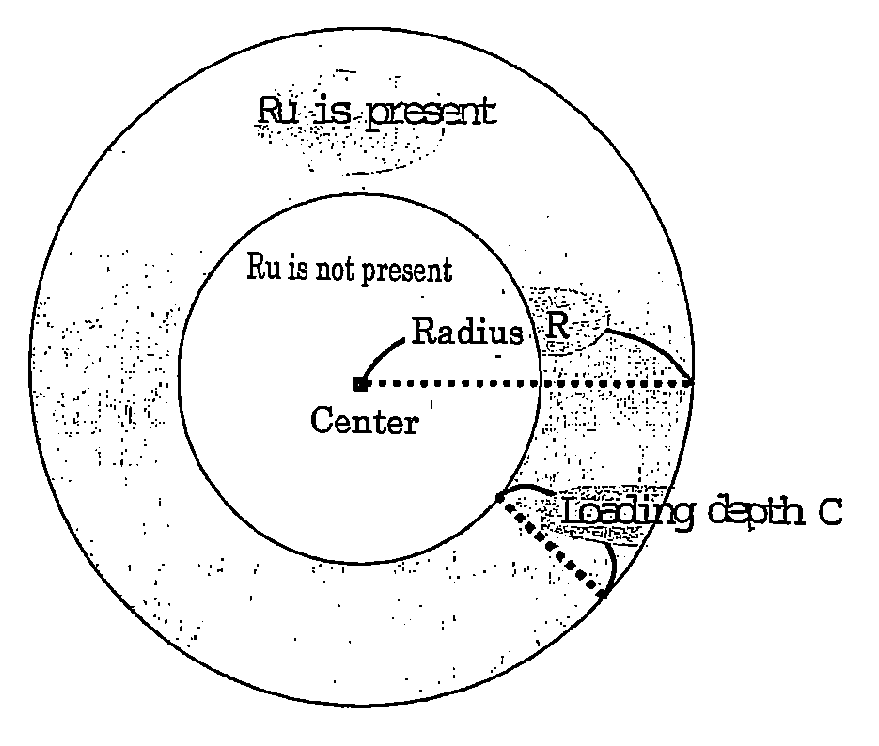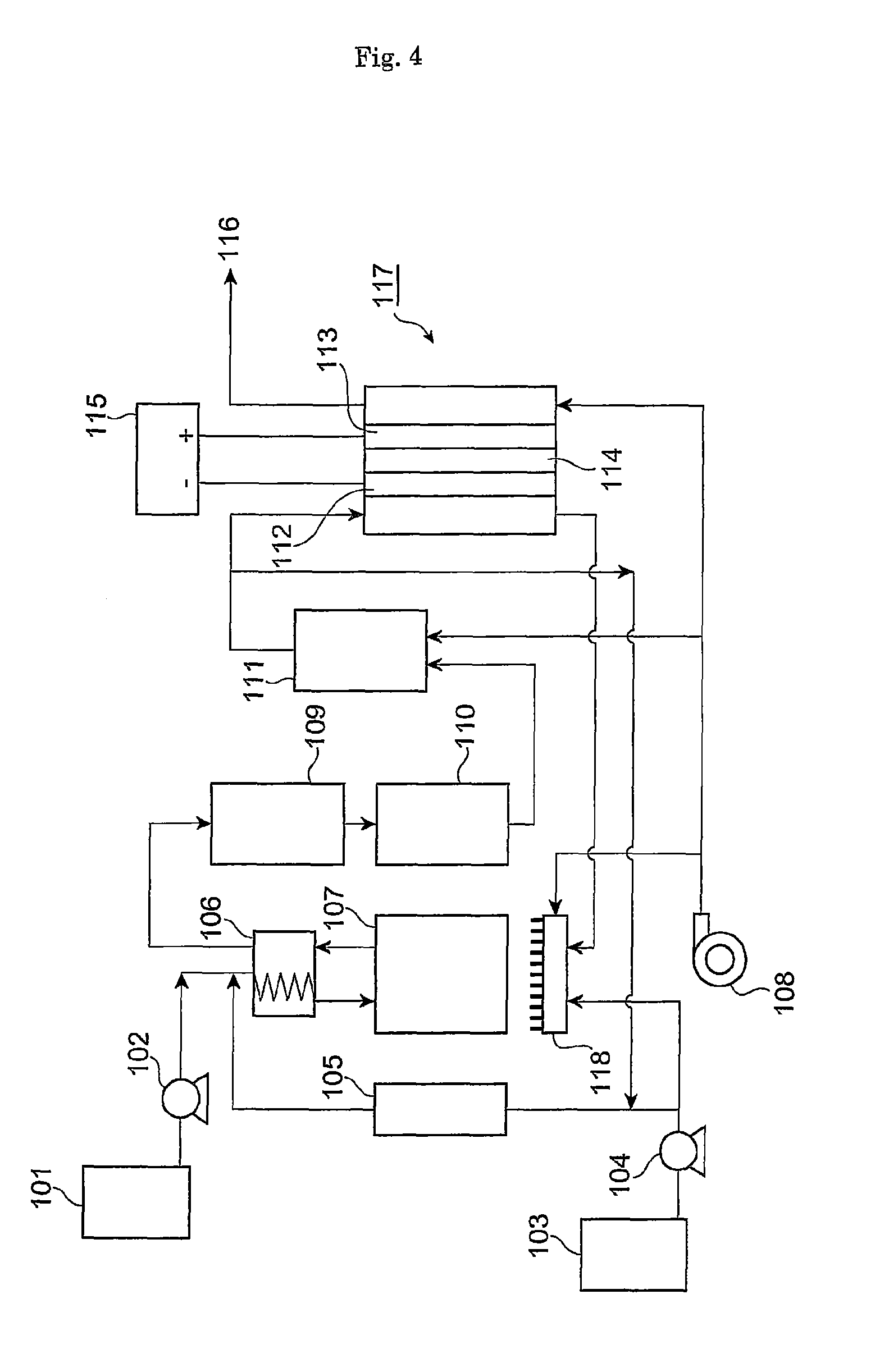Catalyst for reducing carbon monoxide concentration
a carbon monoxide and catalyst technology, can solve the problems of inability to avoid hydrogen loss, inability to meet the efficiency requirements, and the two-step method that is applied in the field of catalysts, and achieve the effect of improving the methanation capability of the catalys
- Summary
- Abstract
- Description
- Claims
- Application Information
AI Technical Summary
Benefits of technology
Problems solved by technology
Method used
Image
Examples
example 1
[0082]As shown in FIG. 5, for catalyst A1, the relative position where ruthenium was present was from 0 to 23 percent and thus the relative loading depth of ruthenium X(Ru)=23(%). That is, it was confirmed that catalyst A1 satisfied the requirement of formula (1) above. The resulting product gas had a CH4 concentration of 2,700 ppm by volume and a CO concentration of 3.2 ppm by volume. Therefore, catalyst A1 was able to reduce the CO concentration in the product gas to 5 ppm by volume or less because of its high methanation capability.
example 2
[0083]As shown in FIG. 6, for catalyst A2, the relative position where ruthenium was present was from 0 to 15 percent and thus the relative loading depth of ruthenium X(Ru)=15(%). That is, it was confirmed that catalyst A2 satisfied the requirement of formula (1) above. The resulting product gas had a CH4 concentration of 1,800 ppm by volume and a CO concentration of 3.4 ppm by volume. Therefore, catalyst A2 was able to reduce the CO concentration in the product gas to 5 ppm by volume or less because of its high methanation capability.
example 3
[0087]As shown in FIG. 5, for catalyst A1 of Example 1, Y1 / Y2=3.3 and thus it was confirmed that catalyst A1 satisfied the requirement defined by formula (3). The resulting product gas had a CH4 concentration of 2,700 ppm by volume and a CO concentration of 3.2 ppm by volume. Therefore, catalyst A1 was able to reduce the CO concentration in the product gas to 3.5 ppm by volume or less because of its high methanation capability. The results are also set forth in Table 1.
PUM
| Property | Measurement | Unit |
|---|---|---|
| pore diameter | aaaaa | aaaaa |
| temperature | aaaaa | aaaaa |
| time | aaaaa | aaaaa |
Abstract
Description
Claims
Application Information
 Login to View More
Login to View More - R&D
- Intellectual Property
- Life Sciences
- Materials
- Tech Scout
- Unparalleled Data Quality
- Higher Quality Content
- 60% Fewer Hallucinations
Browse by: Latest US Patents, China's latest patents, Technical Efficacy Thesaurus, Application Domain, Technology Topic, Popular Technical Reports.
© 2025 PatSnap. All rights reserved.Legal|Privacy policy|Modern Slavery Act Transparency Statement|Sitemap|About US| Contact US: help@patsnap.com



